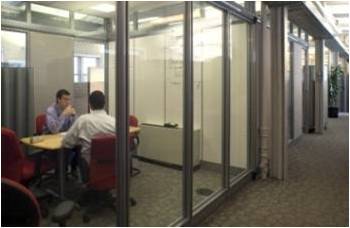Energy Management Systems (EnMS)
The International Organization for Standardization (ISO) defines an Energy Management System (EnMS) as a system “whose purpose is to enable an organization to follow a systematic approach in achieving continual improvement of energy performance, including energy efficiency, energy use and consumption.” Energy Management Systems are a set of business processes that enable facility managers to act on energy usage data and optimize efficiency while identifying areas for improvement.
No matter how large or small your organization, implementing a structured energy management system can be a key step to:
- Cutting operational costs
- Achieving continual operational improvement
- Improving risk management
- Staying competitive in the marketplace
Energy Management Systems include energy assessments and the development of action plans that detail sustainability and energy performance improvement efforts to be implemented in buildings. Consider the following resources when implementing these action plans to improve building performance:
- The Federal Energy Management Program (FEMP) provides minimum energy efficiency requirements for product categories, as well as approved products that can help your facility meets its energy goals.
- Check out the Green Procurement Compilation for details on green purchasing facility-wide to help meet goals.
- Submetering is a great way to monitor energy usage by building system and identify significant energy uses.
- The US DOE has developed the 50001 Ready program, a self-guided approach for facilities to establish an energy management system and self-attest to the structure of ISO 50001, the global standard for energy management systems (EnMS), in industrial, commercial, and institutional facilities.
Related Topics
Energy Management Systems (EnMS)
Energy Management Systems are a set of business processes that enable facility managers to act on energy usage data and optimize efficiency while identifying areas for improvement. No matter how large or small your organization, implementing a structured energy management system can be a key step to:
- Cutting operational costs
- Achieving continual operational improvement
- Improving risk management
- Staying competitive in the marketplace
For more, see Energy Management Systems and DOE's 50001 Ready Program![]() .
.
Energy Performance
Assessing a building’s energy performance involves comparing its energy use to that of peers or a standard. The ENERGY STAR program provides recognized benchmarks for assessing a building’s energy performance.
Sustainability
Sustainability and sustainable mean to create and maintain conditions, under which humans and nature can exist inproductive harmony, that permit fulfilling the social, economic,and other requirements of present and future generations.
Sustainability Program Development
Sustainability Programs incorporate all building stakeholders into the green design process, promoting awareness, goal development, implementation, acceptance, and effectiveness of facility sustainability efforts.

